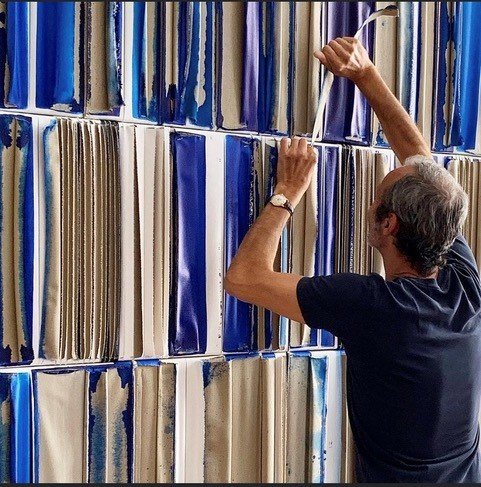THE MYSTERY OF THE FOLD
9th February - 13th March 2023
Frédérick Mouraux Gallery is pleased to announce the Solo Exhibition of Jean-Philippe Duboscq at the European Commission in Brussels, at the DG BUDG.
The fold can be the play of the visible and the hidden, of presence and absence, of appearance and disappearance. It transforms a representation when we want to be faithful to reality. It’s also part of our life and of the nature. We are surrounded by folds: from geological folds to folds on water, from body wrinkles to garment drapes, the fold is the trace of the eternal movement of life.
The folds in its numerous artistic facets are interpreted by Jean-Philippe Duboscq giving way to a work never stable and always in motion!
Jean-Philippe Duboscq studied in the art school "La Cambre", and was a musician and composer of contemporary music before becoming a painter. Some years ago, he moved away from traditional painting to turn to a very particular conceptual and tridimensional technique changing radically the surface of the canvas.
He works with big linen canvases that are folded and grafted on the frame. The superimposed canvases are often torn, ripped, folded, unfolded, folded again... constructed, decomposed, reconstructed. The metamorphosis is complete very often bringing unexpected results and giving new shapes to the canvas. Then Duboscq paints the folded surfaces with wide brushes. The colour seeps or overflows the canvas and its folds. Again, the result can be totally unexpected. Duboscq often works in sequences that are repeated with different colours, remembering a musical rhythm.
The fold represents a real mystery for the artist and not gives new shapes to the canvas but brings also new creative opportunities. The colour, sometimes vivid, seeps in, overflows, underlines the folded surface and becomes an integral part of the work. What if we avoided controlling everything?
Jean-Philippe Duboscq speaks about his philosophy and his work with Bernard Gilbert, a teacher of Chromatic Research at the Academy of Fine Arts of Namur.
BUDG Art@work team

